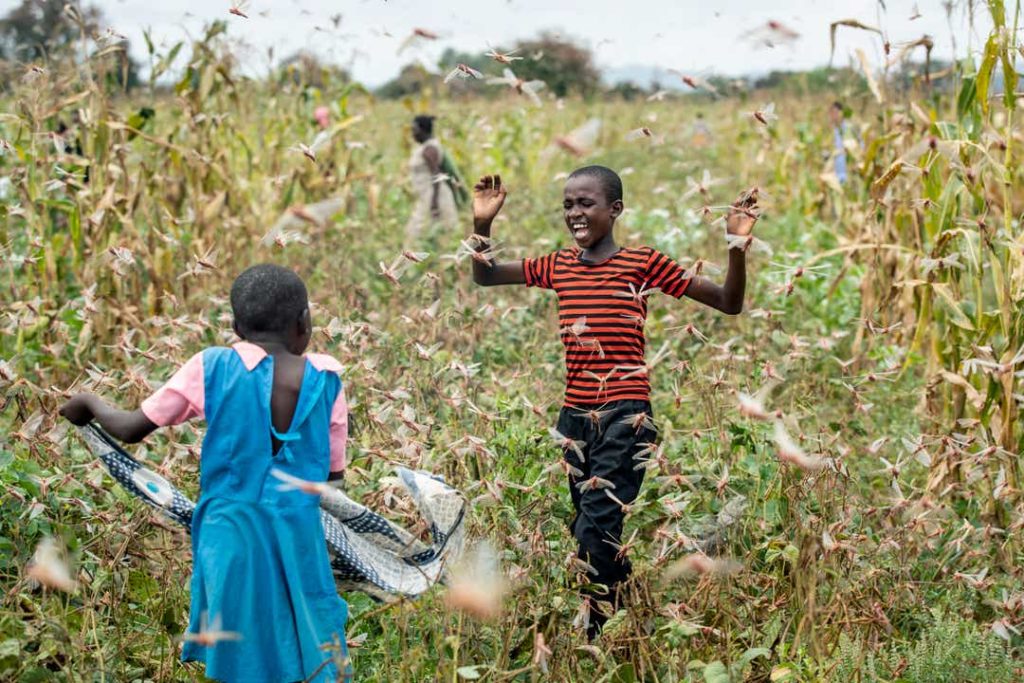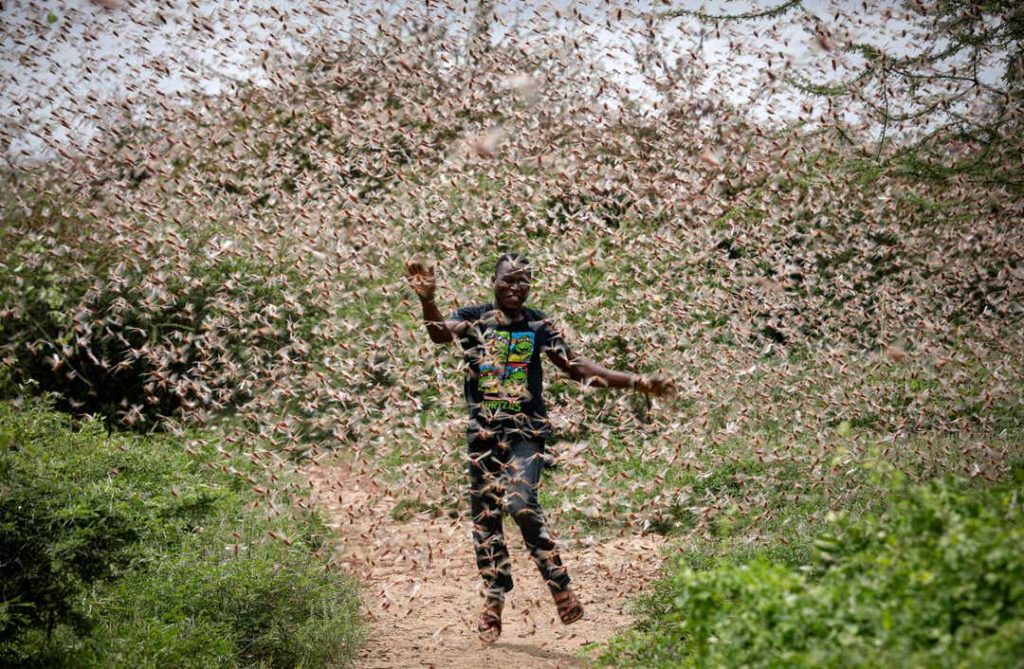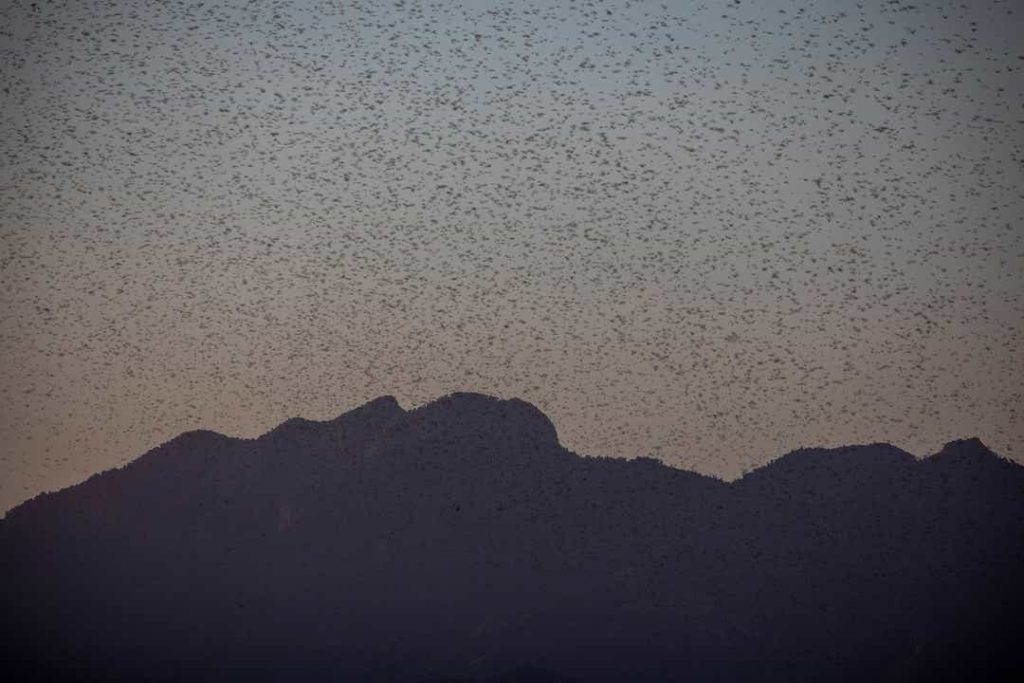East Africa faces the largest “Humans to Locusts” battle in 70 years
2020 has been challenging to say the least. With the Coronavirus outbreak, the tragic loss of Kobe Bryant and his daughter Gianna Bryant, the continuing threat of climate change, and more, it all seems too much. Yet, in Africa, the Middle East, and Southwest Asia, another crisis has been going on for some time – a tremendous outbreak of desert locust swarms, also known as the most catastrophic migratory pests in the world.

Sons and daughters of local farmers cry for help as they chase away locusts Photo courtesy of Ben Curtis, AP images
If one were to search pictures of locust swarms in East Africa, photos that would be hard to miss are those of farmers desperately chasing away millions of locusts, all in hopes of protecting their hard-earned crops. In this particular scenario, swarms of locusts would mean thousands upon millions of locusts flying around, feeding on every crop that they land on. The swarms that were already beginning to increase in size a year and a half ago on the Arabian Peninsula and now in Yemen it have worsened to the point where they have become the size of major cities, leaving families in already underdeveloped areas with little to no food and hopes left.
Currently, regional authorities say that a single swarm can contain 150 million locusts per square kilometer of farmland. One of the bigger swarms that was spotted in Kenya contained about 200 billion individual locusts. In spite of all that, the worst is still yet to come. In an interview with National Geographic, Keith Cressman, a senior locust forecasting officer with the Food and Agriculture Organization (FAO), Cressman says he fears that there will be an increase in locusts by June, going up as much 500-fold.
According to the FAO, over 13 million people in regions of Africa are facing “severe acute food insecurity” while 20 million others are only getting exceptionally closer. Ahmed Ibrahim, a farmer in Ethiopia, questions in despair, “We have nothing else to sell at the market. How will I feed my eight children?” The locust swarms are currently heading towards Uganda and South Sudan, a region that is already facing hunger emerging from civil war. Jens Laerke from the U.N. humanitarian office in Geneva says that a small swarm of locusts can consume enough food for 35,000 people in one day. As terrifying as it is, there is little that farmers can do. “Even cows are wondering what is happening…Corn, sorghum, cowpeas, they have eaten everything,” says Ndunda Makanga, a local farmer in Kenya who spends hours on his farm, trying to chase away locusts.

Theophilus Mwendwa, a local farmer, runs through crowds of locusts, trying to chase them away Photo courtesy of Daid Kurokawa, EPA-EFE
Now, what is the reason behind this locust plague? Although the cause is yet to be confirmed, many scientists believe that climate change plays a major role in this infestation. Climate scientist Abubakr Salih Babiker says that “a changing climate has contributed to ‘exceptional’ breeding conditions.” Warmer temperatures and heavy rainfall make it ideal for locusts to breed uncontrollably. Since late 2019, there has been reported heavy rainfall in the tropical regions.

Swarms of locusts occupy the skies of Kenya Photo courtesy of Sven Torfinn, Food and Agriculture Organization via, EPA-EFE
In the meantime, East Africa is facing another problem, lacking spraying equipment for the pesticides, as well as the pesticides themselves. The FAO is doing everything they can to help regions afflicted with this issue, including calling on the international community to help provide 76 million dollars needed for pest control. Even so, it is only a matter of time and the weather for the worst case scenario to happen.
In a horrendous battle between the human race and the most destructive pests in the world, actions must be taken quickly in order the ensure the wellbeing of the farmers in Africa, the Middle East, and Southwest Asia.
Featured Image — A farmer in Kenya looks around at the locusts destroying her crops in despair. Courtesy of Ben Curtis, AP images
by Sara Tee

